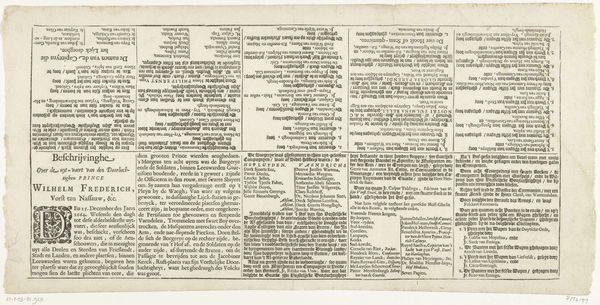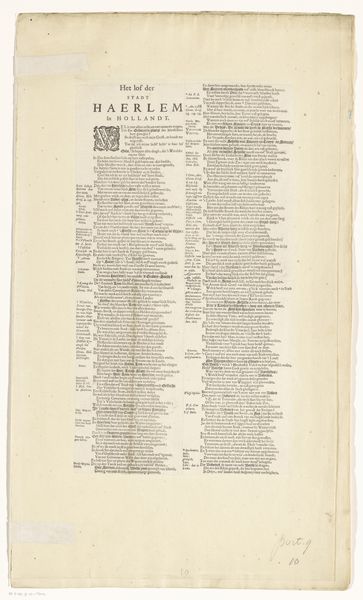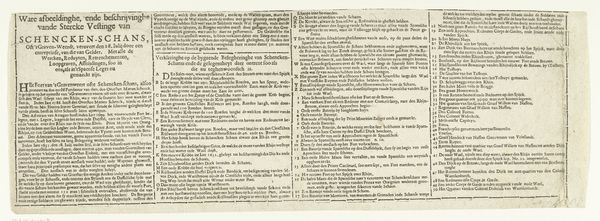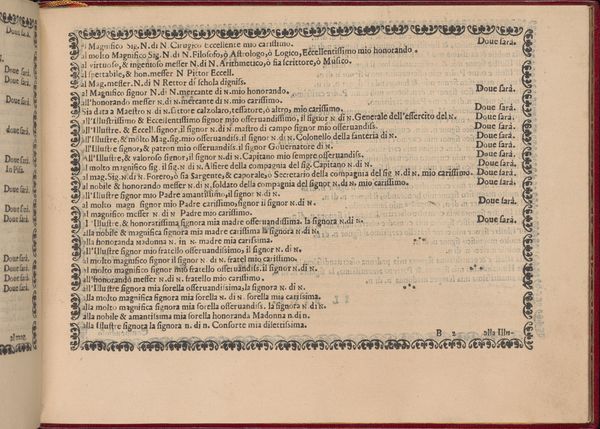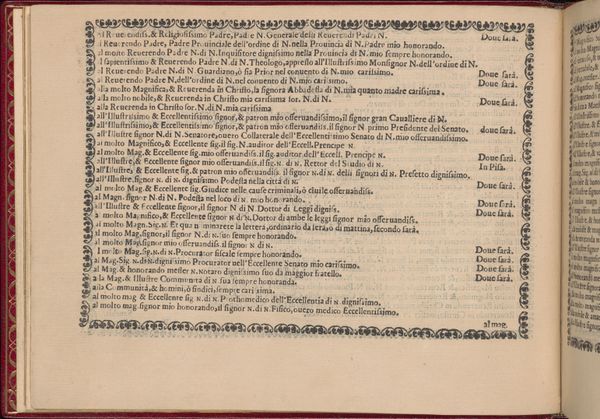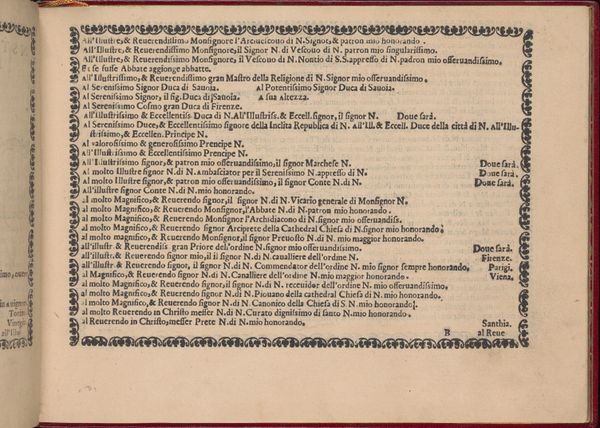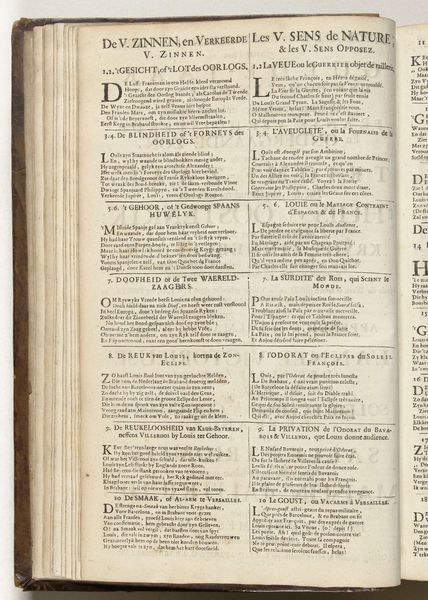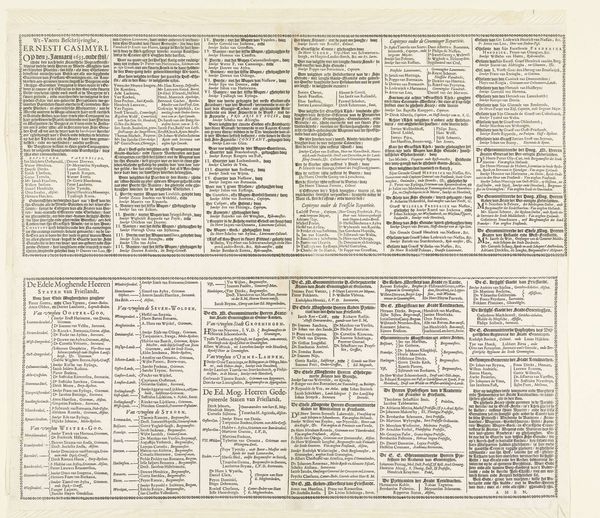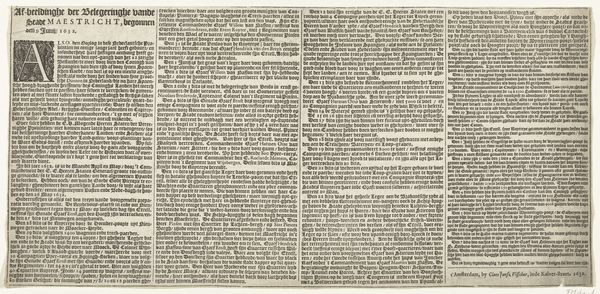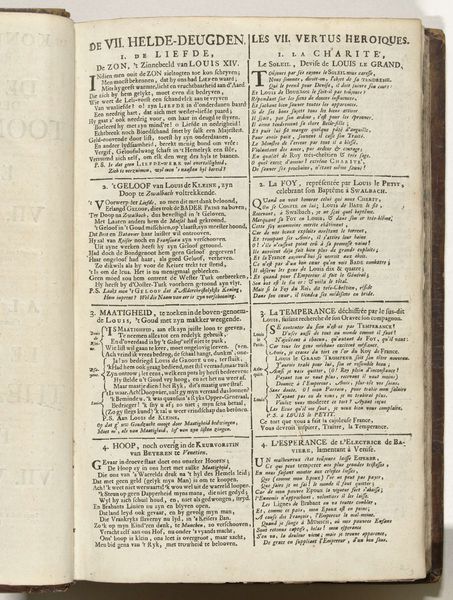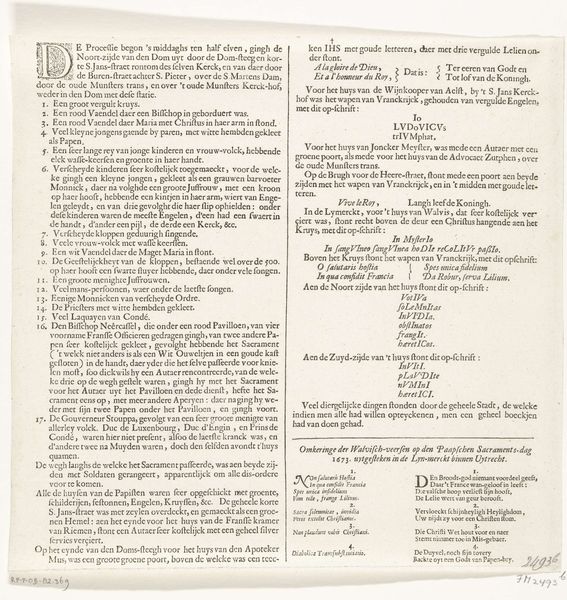
Tekstblad met de lijkklacht bij de begrafenis van Willem Lodewijk, graaf van Nassau, in de Grote Kerk te Leeuwarden, 1620 1620
0:00
0:00
janjanszstarter
Rijksmuseum
print, paper, typography, engraving
# print
#
paper
#
typography
#
newspaper layout
#
engraving
Dimensions: height 470 mm, width 93 mm
Copyright: Rijks Museum: Open Domain
This printed sheet, a ‘lykklachte’ or funeral lament, was made by Jan Jansz Starter in 1620, using ink on paper. As a work of printmaking, it is inextricably tied to its mode of production. Consider the labor involved: the punch-cutters who made the letterforms, the compositors who set them in place, the pressmen who cranked out potentially hundreds of these sheets. The resulting texture is a direct result of the inked letters pressing into the fibers of the paper. Even the imperfections - uneven inking, blurred letters - speak to the realities of early modern printing. But what does this mean for the work’s social significance? Well, the mass production of such texts, made possible by the printing press, democratized grief and mourning. While only elites could afford elaborate funerals, the printed ‘lykklachte’ allowed a wider public to participate in the ritual of remembrance. Thinking about the materiality and production of this seemingly humble object, we see how intimately art, labor, and social life were intertwined in the 17th century.
Comments
No comments
Be the first to comment and join the conversation on the ultimate creative platform.
